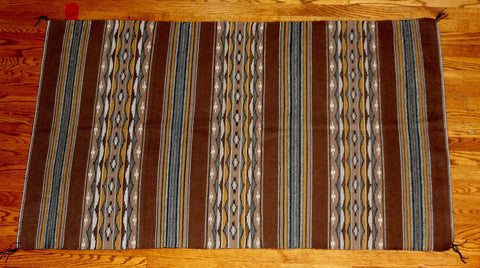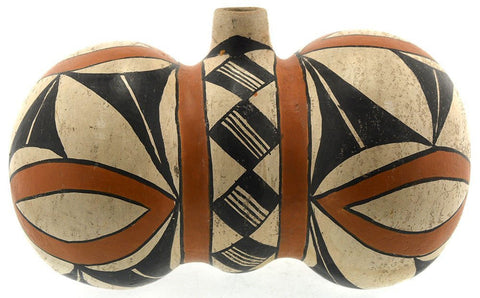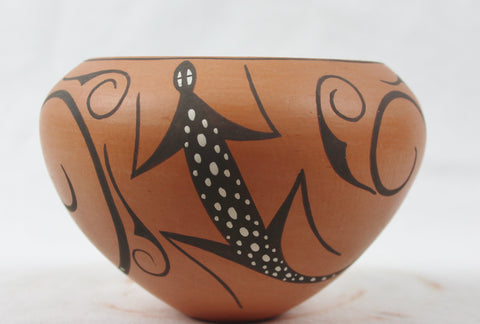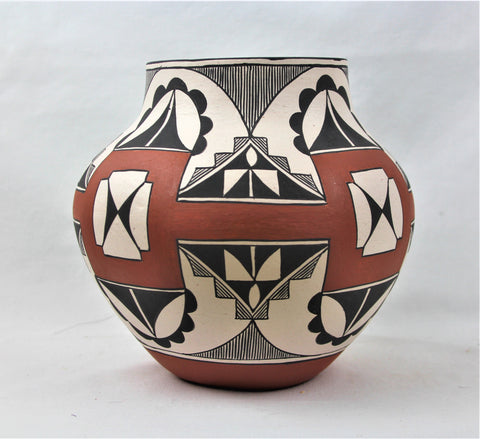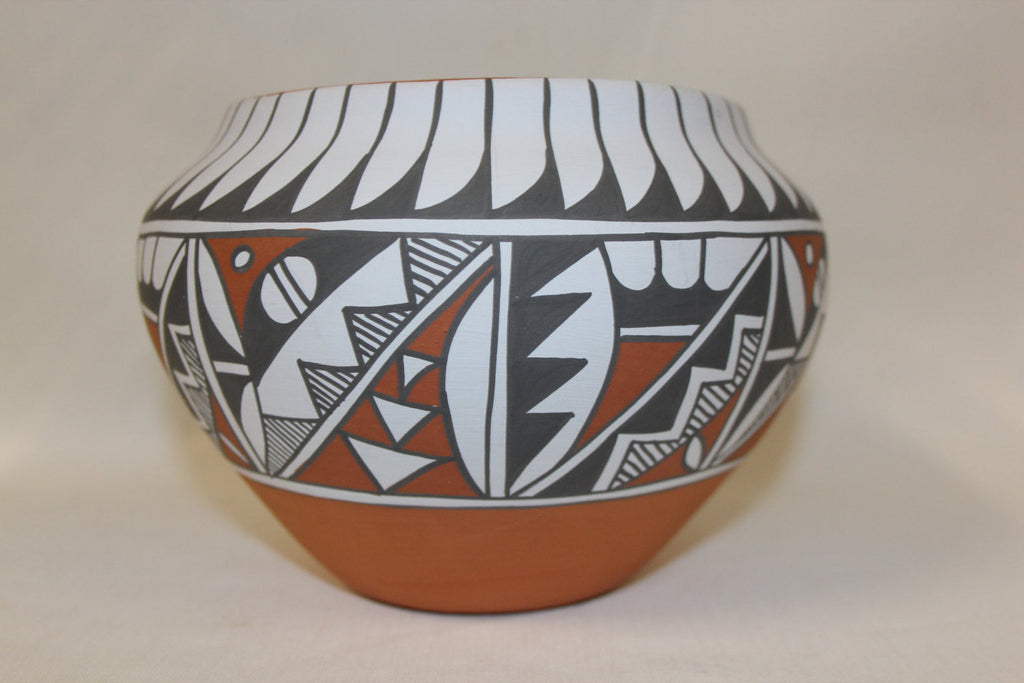
Pottery Jar : Beautiful Native American Jemez Pottery Jar, by Mary Small #80 Sold
$ 200.00
Native American
Jemez Pottery Jar
80. Description: Native American Jemez Pottery Jar, Fine poly chrome geometric and feather design signed Mary small 4.75"x 6.5".
Native American potter and sculptor Mary Small, of Jemez Pueblo, New Mexico, IACA Artist of the Year for 2002, has learned to work clay in the traditional coiling method of her ancestors, using clay's dug on Jemez land and hand-painted with clay glazes which are fired outdoors over cottonwood coals after each application of color.
She is a consistent prizewinner at major Indian art shows. She is like a jewel in the Indian art world and enjoys a warm following of collectors. Mary Small's pottery is featured in the Heard Museum, the Denver Museum of Natural History and the Smithsonian Institution, as well as in permanent private collections throughout the country. Mary views pottery making to be a spiritual act. She prays during each step in the process.
She explains, When my pottery is finished, they are blessed. They have power. With respect for Mother Earth. Mary accepts her blessing graciously. (Source: Schaaf; Southern Pueblo Pottery, 2000 Artists Biographies).
Pueblo pottery is made using a coiled technique that came into northern Arizona and New Mexico from the south, some 1500 years ago. In the four-corners region of the US, nineteen pueblos and villages have historically produced pottery. Although each of these pueblos use similar traditional methods of coiling, shaping, finishing and firing, the pottery from each is distinctive. Various clay's gathered from each pueblo's local sources produce pottery colors that range from buff to earthy yellows, oranges, and reds, as well as black. Fired pots are sometimes left plain and other times decorated most frequently with paint and occasionally with applique. Painted designs vary from pueblo to pueblo, yet share an ancient iconography based on abstract representations of clouds, rain, feathers, birds, plants, animals and other natural world features.
Tempering materials and paints, also from natural sources, contribute further to the distinctiveness of each pueblo's pottery. Some paints are derived from plants, others from minerals. Before firing, potters in some pueblos apply a light colored slip to their pottery, which creates a bright background for painted designs or simply a lighter color plain ware vessel. Designs are painted on before firing, traditionally with a brush fashioned from yucca fiber.
Different combinations of paint color, clay color, and slips are characteristic of different pueblos. Among them are black on cream, black on buff, black on red, dark brown and dark red on white (as found in Zuni pottery), matte red on red, and poly chrome a number of natural colors on one vessel (most typically associated with Hopi). Pueblo potters also produce un-decorated polished black ware, black on black ware, and carved red and carved black wares.
Making pueblo pottery is a time-consuming effort that includes gathering and preparing the clay, building and shaping the coiled pot, gathering plants to make the colored dyes, constructing yucca brushes, and, often, making a clay slip. While some Pueblo artists fire in kilns, most still fire in the traditional way in an outside fire pit, covering their vessels with large potsherds and dried sheep dung. Pottery is left to bake for many hours, producing a high-fired result.
Today, Pueblo potters continue to honor this centuries-old tradition of hand-coiled pottery production, yet value the need for contemporary artistic expression as well. They continue to improve their style, methods and designs, often combining traditional and contemporary techniques to create striking new works of art.. (Source: Museum of Northern Arizona)

